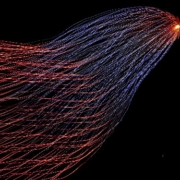Introduction
Teams that work with Machine Learning (ML) workloads in production know that added complexity can bring projects for a grinding halt. While deploying simple ML workloads might seem like an easy task, the process becomes a lot more involved when you begin to scale and distribute these loads and implement tools like Kubernetes. Although Kubernetes allows teams to rapidly scale their organization’s infrastructure, it also adds a layer of complexity that can become a major burden without the right tools.
Today I’m going to introduce you to an OSS project known as Kubeflow that seeks to assist engineering teams with deploying ML workloads into production in Kubernetes. The Kubeflow project is dedicated to making deployments of machine learning (ML) workflows on Kubernetes simple, portable and scalable.








 Selon l’
Selon l’ 

